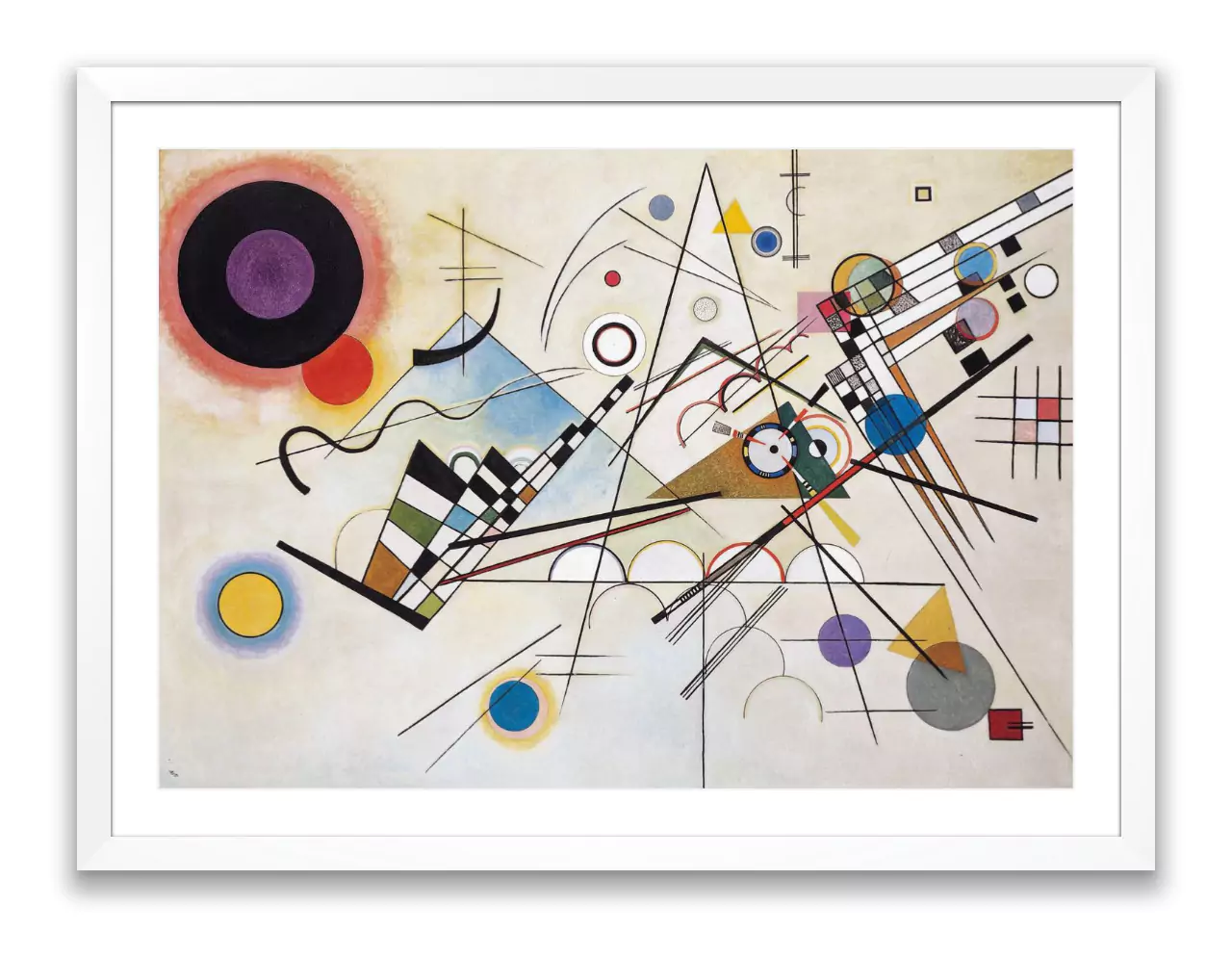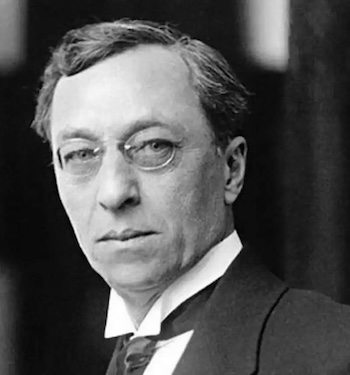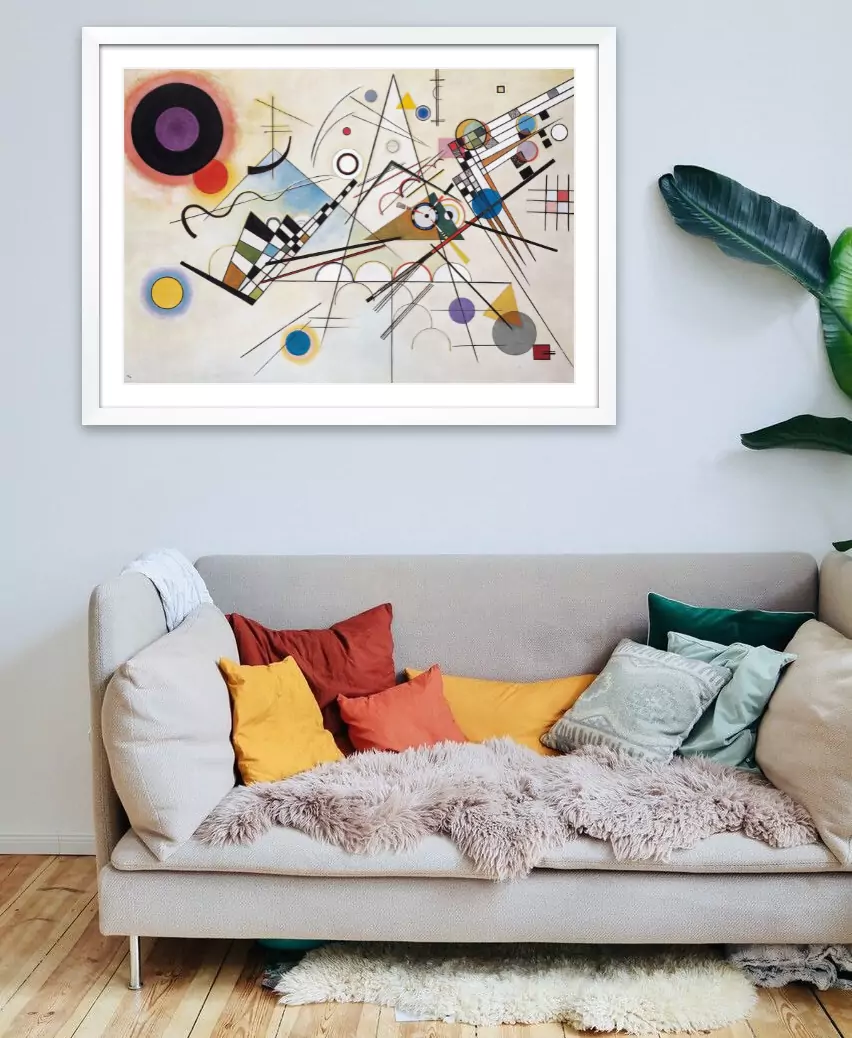
Kandinsky
Komposition 8
Paint on canvas140x201 cm
€ 540
SRPF13R
Kostenlose Lieferung
Dieses Werk ist kein Original. Es handelt sich um einen hochwertigen Leinwanddruck. Es wird daher nicht von einem Authentifizierungsdokument begleitet. Es kann in einem anderen Rahmen geliefert werden.
Dieser Artikel kann innerhalb von zwei Wochen nach Erhalt zurückgegeben werden. Die Versandkosten gehen zu Lasten des Käufers. Das Stück muss in demselben Zustand zurückgegeben werden, in dem es erhalten wurde.
Die Lieferzeit für dieses Stück beträgt etwa 14 Tage, sofern es sich nicht um eine dringende Bestellung handelt. Das Kunstwerk wird ordnungsgemäß verpackt und versichert.
Der kostenlose Versand gilt nur für Länder in der Europäischen Union.

Wassily Kandinsky
Kandinsky (1866–1944) was a Russian painter, one of the pioneers of abstract art. Born in Moscow, he spent his childhood in Odessa. He decided to dedicate himself to painting at the age of 30 after being inspired by Monet’s Haystacks and Wagner’s opera Lohengrin.
In 1896, Kandinsky moved to Munich to study art, enrolling at the Academy of Fine Arts. His early works reflected Impressionist influences, but he soon began experimenting with color and form to express emotions rather than depict reality. Kandinsky co-founded the Der Blaue Reiter group in 1911 with Franz Marc and other Expressionist artists. During this period, he developed his theories on the relationship between music and color, publishing influential texts on abstraction.
After World War I, Kandinsky returned to Russia briefly before relocating to Germany in 1922 to teach at the Bauhaus school. His tenure at Bauhaus further solidified his reputation as a leading figure in Modern Art. Following the closure of Bauhaus by the Nazis in 1933, Kandinsky moved to France, where he continued to produce innovative works until his death in Neuilly-sur-Seine in 1944.
Über dieses Werk
Kandinsky viewed Composition VIII as a “visual symphony,” aiming to evoke emotions akin to those experienced through music. He believed that colors and forms had intrinsic spiritual and psychological effects. For instance, circles in the painting symbolize unity and harmony, while triangles convey tension and movement. The vibrant yet balanced color palette enhances the painting’s rhythmic energy, creating a surface that feels simultaneously dynamic and calm.

The work reflects Kandinsky’s theories on the relationship between color, form, and spirituality. He sought to develop an abstract visual language capable of eliciting profound emotional responses, much like music does. This aspiration aligns with his belief in the “inner sound” of forms and his exploration of universal harmony in art.
Hinweis - Diese Reproduktion wird auf 400 g/m² Leinwand aus 100 % Baumwolle gedruckt, die mit der von Malern verwendeten Leinwand identisch ist, so dass sie einem Originalkunstwerk ähnelt. Die Drucke werden mit dem Giclée Verfahren hergestellt, das Werke in Galeriequalität erzeugt.
Jetzt bestellen!
Sie können diesen Artikel kaufen, indem Sie auf den unten stehenden Button klicken, wenn Sie mit Kreditkarte, PayPal oder möglicherweise in Raten bezahlen möchten.
Wenn auf dem Produkt "Versandkosten ausgeschlossen“ steht, senden Sie uns vor der Zahlung eine E-Mail mit der Lieferadresse.
Wenn Sie per Banküberweisung bezahlen möchten, klicken Sie bitte hier und füllen Sie das Formular aus. Vergessen Sie nicht, die Produktreferenz und die Lieferdetails anzugeben. Der Kauf wird erst bestätigt, nachdem die Zahlung auf unserem Konto eingegangen ist.
